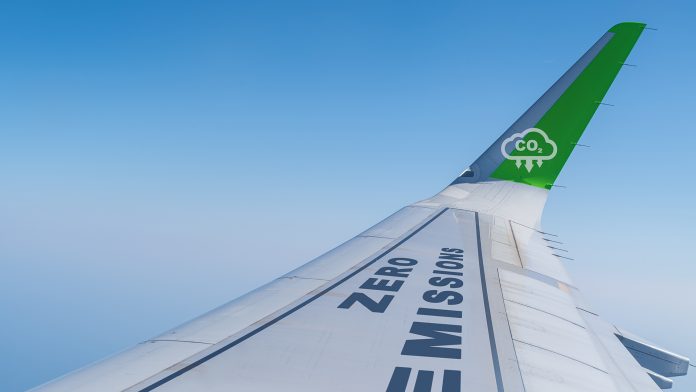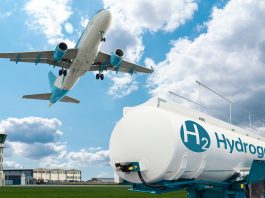Tsinghua University researchers have published a paper that evaluates CO2 to sustainable jet fuel conversion technologies.
In the work, the researchers assess the progression from fossil-fuel-dependent technologies to innovative net zero strategies.
The paper specifically focuses on the formulation of Sustainable Aviation Fuel (SAF) from CO2 and provides an assessment of the practicality of current industrial models.
The researchers emphasise that carbon emissions must be reduced to achieve net zero targets, and conversion into SAF is a viable option to do this. This is because demand for SAF is also rising to decarbonise the aviation industry.
The work is published in Carbon Future.
Why should we reduce carbon emissions?
The concentration of greenhouse gases has risen in our atmosphere due to the dependency on carbon-intensive energy sources.
According to Copernicus data, burning fossil fuels has caused CO2 in the atmosphere to rise from approximately 280 parts per million (ppm) in pre-industrial times to around 417 ppm in 2022. This is a 40% increase since the beginning of the Industrial Revolution.
Reducing CO2 and CH4 is particularly challenging in the chemical industry because of current technological constraints.
Amid this challenge, governments around the world have adopted different strategies to reduce carbon emissions.
About Sustainable Aviation Fuel
Aviation fuel has an energy density of 80 times that of commercial lithium-ion batteries, making it challenging for the aviation industry to achieve electrification.
Because of this, SAF has become the main route to net-zero emissions in the industry.
SAF refers to a C8~15 liquid hydrocarbon fuel derived from non-fossil resources.
By the end of 2020, 65 countries around the world had implemented mandatory blending policies for SAF. ICAO’s Carbon Reduction Offset Mechanism will be fully enforced by 2027.
The EU Renewable Energy Directive states that the proportion of SAF blending shall not be less than 5% in 2030 and 70% in 2050, of which the proportion of electric fuels produced through carbon dioxide capture (eFuel) shall not be less than 35% by 2050.
CO2 to SAF technology reduces emissions and creates green fuel
CO2 to SAF technology harnesses CO2 as a carbon feedstock, integrating it with green hydrogen produced via electrolysis of water using renewable energy.
This process synthesises liquid jet fuel with a high energy density.
Fei Wei, a professor at Tsinghua University, said: “Renewable aviation fuel is recognised globally in the aviation industry as a viable pathway for carbon reduction. The high added value of this process establishes it as an important, profitable industrialisation method.”









